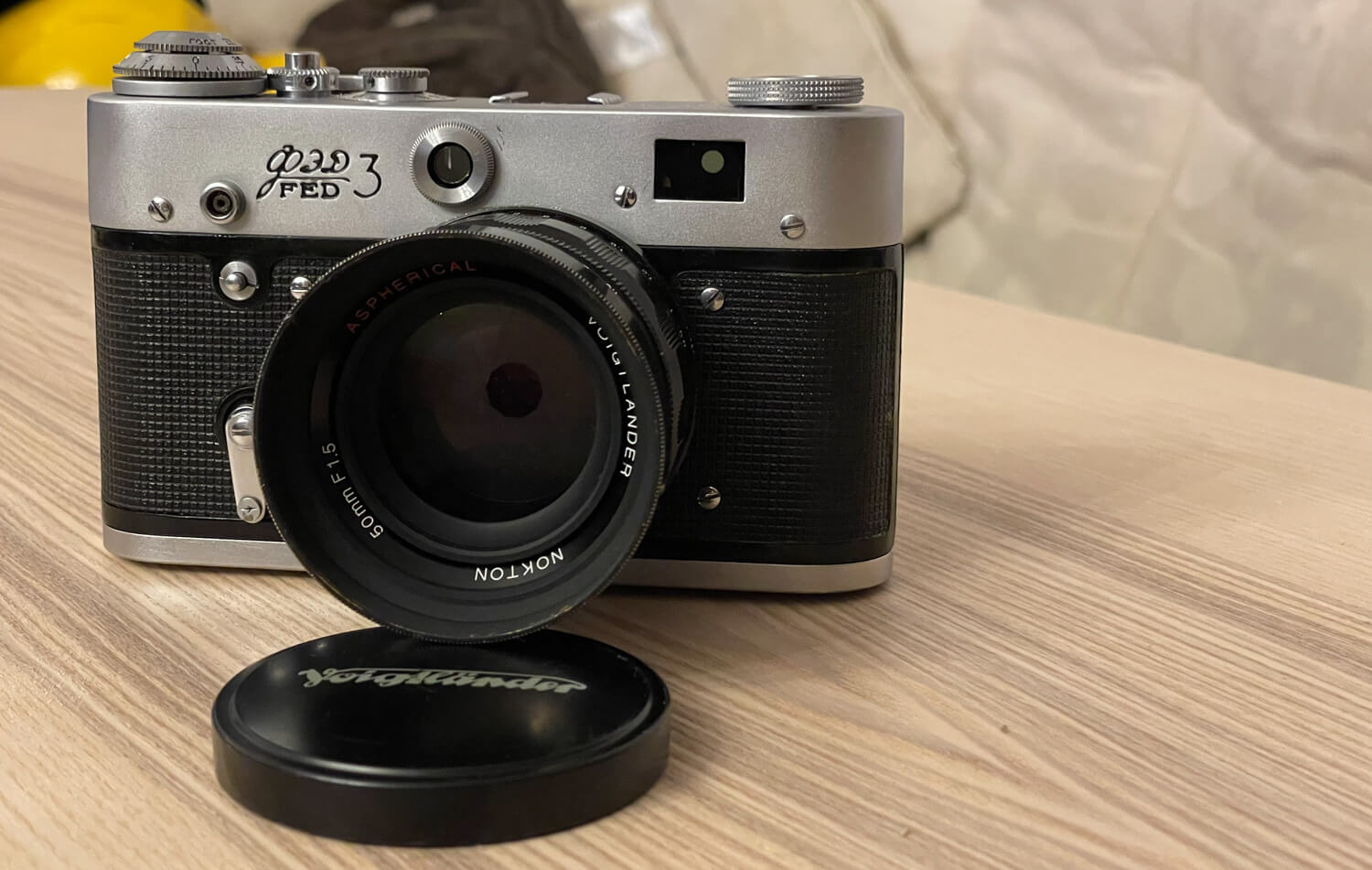After having shot black and white film for a while but always having shied away from properly developing it at home (I had developed a few rolls of film in Cinestill Df96 monobath — these were just test rolls and didn’t really have much archival or sentimental value), I decided to go straight for gold and brew my own developer. My choices were limited to Parodinal and Caffenol, and after experiencing some difficulty sourcing USP-grade Paracetamol in sufficient quantities for a reasonable amount of money, I decided to brew Caffenol.
To get my pictures, I went out and shot a roll of ILFORD HP5 PLUS with my Soviet KMZ FED-3b camera, using a Voigtländer Nokton 35mm/f1.5 Aspherical lens. The lens and the camera are both M39 (Leica Thread Mount / LTM), and so they natively fit each other. I bought the camera on a trip to Odessa in October 2021, and this combination has been a bit of a tank (both in terms of reliability and the actual heft of the set-up).

I shot all the frames in a very short span of time near my home in beautiful Heidelberg, Germany, and most of the frames were shot at either 1/500s or 1/250s, with apertures varying between f/8 and f/11. The light was pretty consistent.
Once home I brewed my developer solution. I used the Caffenol Delta recipe and developed it for 10 minutes, before fixing for another 10 minutes in freshly prepared Fomafix P. It never ceases to excite me when I take film out of the Lab-Box and actually see the pictures on the film, but this one was extra-special, given that I had just brewed the entire developer myself.
Having said that, the negatives did come out quite thin and the pictures are extremely grainy (compared to, say, developing in Rodinal or even Df96 Monobath). I didn’t add any iodised salt into the developer, although I don’t notice any fogging on the negatives. I’m definitely going to give this a few more tries and tweak both the chemistry and the development times. I’m sure HP5 will benefit from a longer development time.





As for cost, compared to the extremely low cost of Rodinal in Germany (Adox Adonal sells for 14 EUR for a 500ml bottle of concentrate and you can get 45 rolls out of it), Caffenol may have ended up costing me more. I didn’t buy the absolute cheapest ingredients I could find, but actually went out of my way to find anhydrous USP-grade Sodium Carbonate and Ascorbic Acid (Vitamin C). The instant coffee powder was of course store bought, but I definitely plan to find some USP-grade Caffeic Acid and see if substituting that actually works.
Overall, when I started this I was quite skeptical of getting any results at all out of Caffenol, besides being afraid of emerging with brown stained and smelly negatives. As it turns out though, the images are well-defined, the results are quite aesthetically pleasing and the negatives are neither brown nor smelly. And having been fixed properly, they’re actually even archival.
~ Boudhayan
Share your knowledge, story or project
The transfer of knowledge across the film photography community is the heart of EMULSIVE. You can add your support by contributing your thoughts, work, experiences and ideas to inspire the hundreds of thousands of people who read these pages each month. Check out the submission guide here.
If you like what you’re reading you can also help this passion project by heading over to the EMULSIVE Patreon page and contributing as little as a dollar a month. There’s also print and apparel over at Society 6, currently showcasing over two dozen t-shirt designs and over a dozen unique photographs available for purchase.








2 responses to “5 Frames… ILFORD HP5 PLUS (35mm format / EI 400 / FED-3 Type B + Voigtlander Nokton 50mm f/1.5 Aspherical LTM)”
Surely, what body you use has no lmpact on the ages you take, unless the shutter is faulty or the body suffers from light leakage – on which case one shouldn’t be using that body?
Hi Boudhayan,
Thank you for sharing your works.
Just a little remark – FED cameras were not produced by KMZ. They made them at FED factory in Kharkiv in Ukraine.
KMZ factory is located in Krasnogorsk near Moscow in Russia, and its version of Leica was called Zorki.